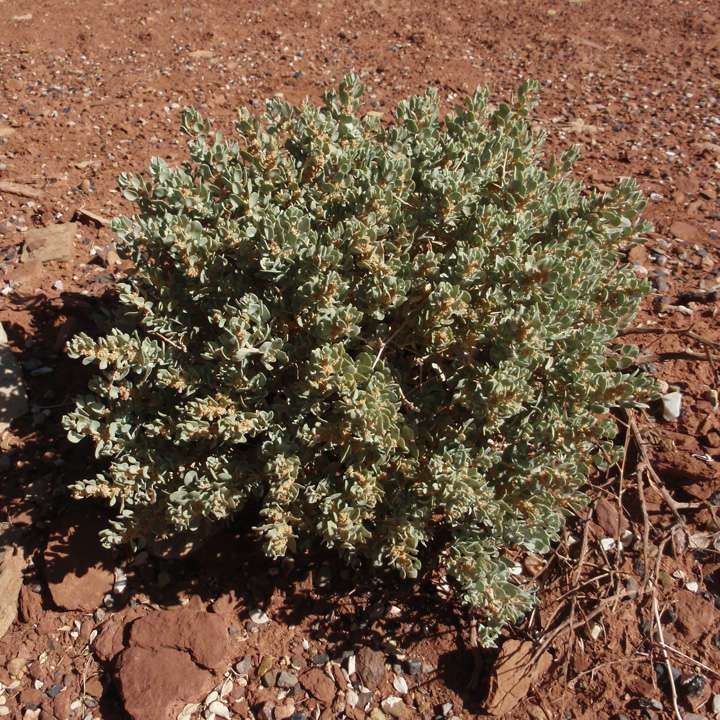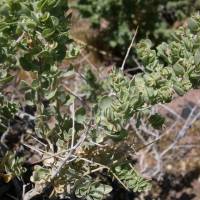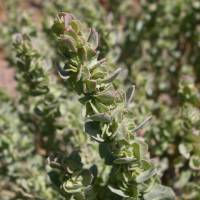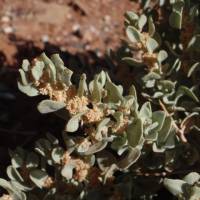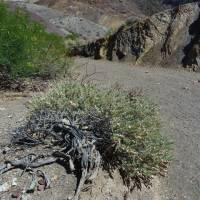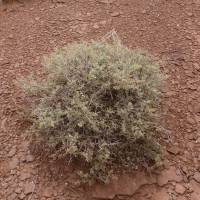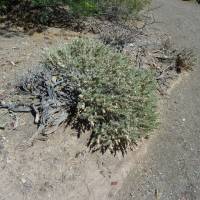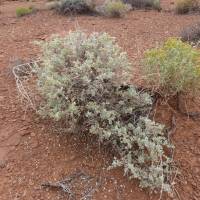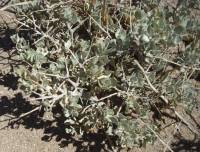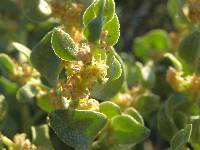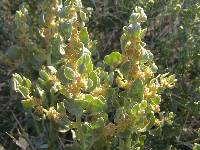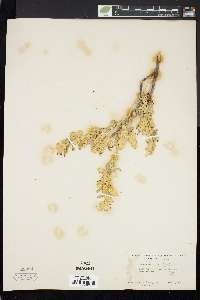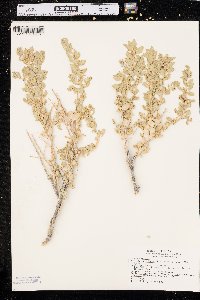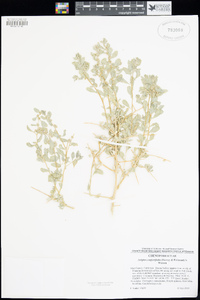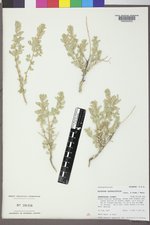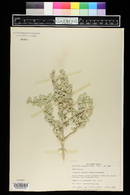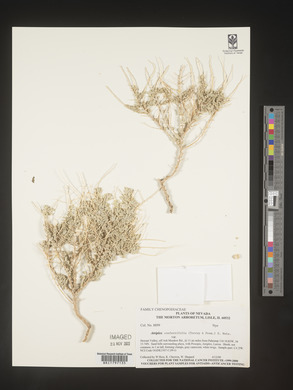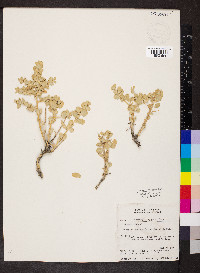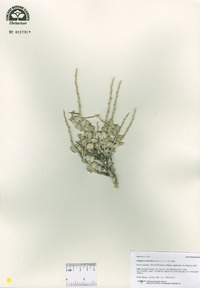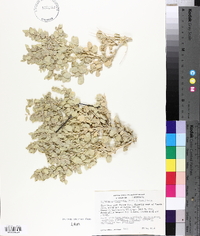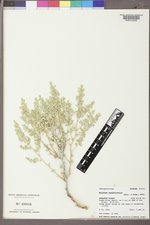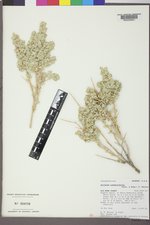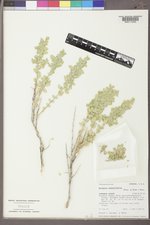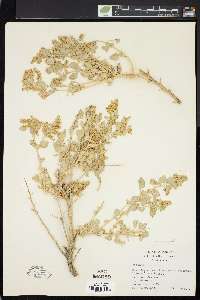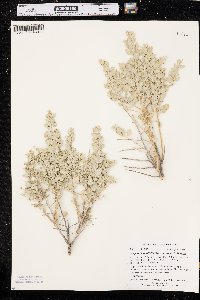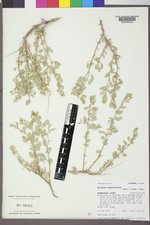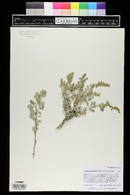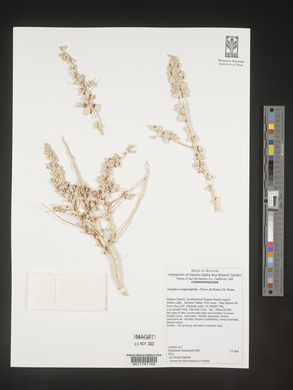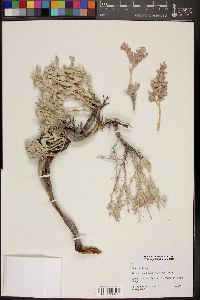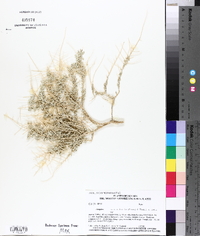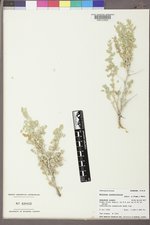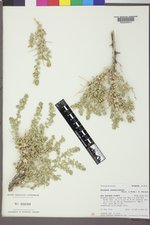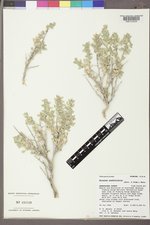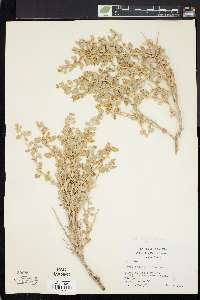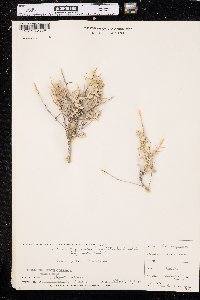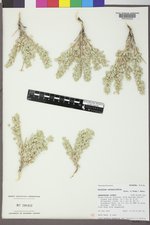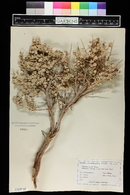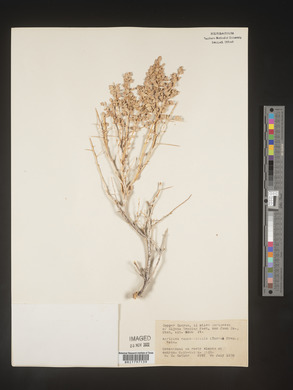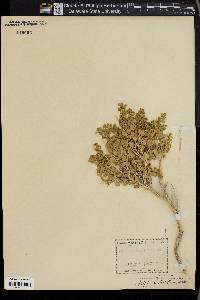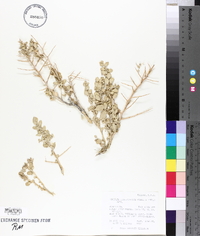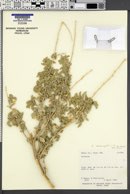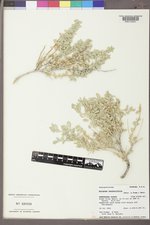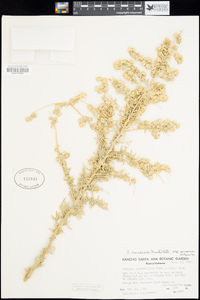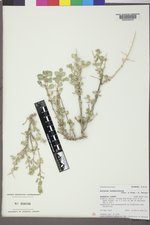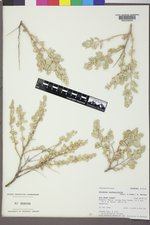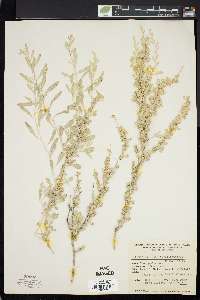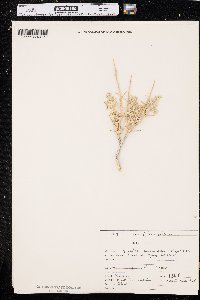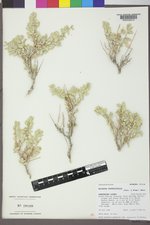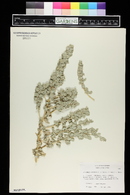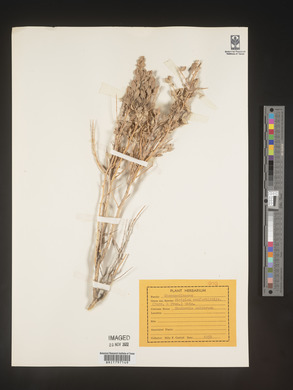Atriplex confertifolia
|
|
|
|
Family: Amaranthaceae
Shadscale, more...shadscale saltbush, spiny saltbush
[Atriplex collina Wooton & Standl., moreAtriplex jonesii Standl., Atriplex subconferta Rydb.] |
Shrubs, dioecious, 3-8 dm, spinescent. Leaves persistent, alternate; petiole 1-4 mm; blade orbiculate to ovate, elliptic, or oval, 9-25(-45) × 4-20(-25) mm, margin entire, apex obtuse. Staminate flowers yellow, in clusters 2-4 mm wide or in spikes to 1 cm, axillary, in foliose-bracteate, divaricately branched panicles 3-15 cm. Pistillate flowers in similar paniculate inflorescences. Fruiting bracteoles sessile or subsessile, suborbiculate to rhombic or elliptic, 4-12 mm and wide, body indurate, terminal teeth distinct, foliaceous, shorter than bracteoles, entire or toothed below, terminal teeth spreading at maturity, faces smooth, lacking appendages. Seeds 1.5-2 mm wide. 2n = 18, 36, 54+. Flowering spring-fall. Gravelly to fine-textured soils in greasewood, mat-atriplex, other salt desert shrub, sagebrush, pinyon-juniper, and ponderosa pine communities; 600-2200 m; Ariz., Calif., Colo., Idaho, Mont., Nev., N.Mex., N.Dak., Oreg., Tex., Utah, Wyo. Shadscale forms hybrids with Atriplex canescens, A. garrettii, A. corrugata, and A. gardneri varieties. It is, however, closely allied to A. parryi and A. spinifera. The plants are widely dispersed, typically on saline substrates but less commonly on essentially non-saline ones, through large areas of the western United States and adjacent Canada and Mexico, on both raw and exposed geological strata and on alluvium.
FNA 2003, Heil et al 2013, Carter 2012 Common Name: shadscale saltbush Duration: Perennial Nativity: Native Lifeform: Shrub, Subshrub General: Dense, spiny, mound-shaped shrub, 30-80 cm tall. Leaves: Evergreen, alternate, and short-petiolate to nearly sessile along the spine-tipped branches; petioles to 1-4 mm long; blades round to oval-shaped, 1-2 cm long, with entire margins; gray-green and covered with scurfy pubescence. Flowers: Male and female flowers on separate plants; staminate (male) flowers tiny and yellow, in 2-4 cm clusters or 1 cm spikes; clusters arranged in foliose-bracteate, divaricately branched panicles, 3-15 cm long; pistillate (female) flowers tiny, lacking petals or sepals, arranged in similar paniculate inflorescences; inflorescence bracts are pink or purple-tinged. Fruits: Fruiting bracteoles sessile or subsessile, suborbiculate to rhombic or elliptic, 4-12 mm long, the body indurate (firm); the terminal teeth distinct, foliaceous, and shorter than the bracteoles; lower margin of fruiting bracteoles can be entire or toothed Ecology: Found in desert scrub, sagebrush, pinyon-juniper, and ponderosa pine communities; often on saline substrates, badlands, or alluvium, from 2,000-7,500 ft (610-2286 m); flowers from April-July. Distribution: w US and adjacent CAN and MEX; most common in the Great Basin Desert, from Four-Corners to e CA, north to OR, ID, and WY. Notes: This spiny, silvery-leaved shrub can be the dominant shrub in harsh, exposed habitats such as badlands. It is inconspicuous unless seen at just the right time when purple bracts subtend the tiny, inconspicuous flower clusters. Look also for whitish spines that appear to be extensions of the branches, and silvery, roundish leaves. Traditionally placed in the goosefoot family (Chenopodiaceae), that entire family was recently lumped into Amaranthaceae. Ethnobotany: Smoke used as a treatment for epilepsy; leaves used to make a liniment for sore muscles and aches; leaves eaten as a potherb; seeds used as a grain, wood used to make arrow points. Etymology: Atriplex is the ancient Latin name for other plants in this genus, derived from the Greek name atraphaxes; confertifolia translates to crowded leaves. Synonyms: Obione confertifolia Editor: AHazelton 2015, AHazelton 2017 |
|
|
|

